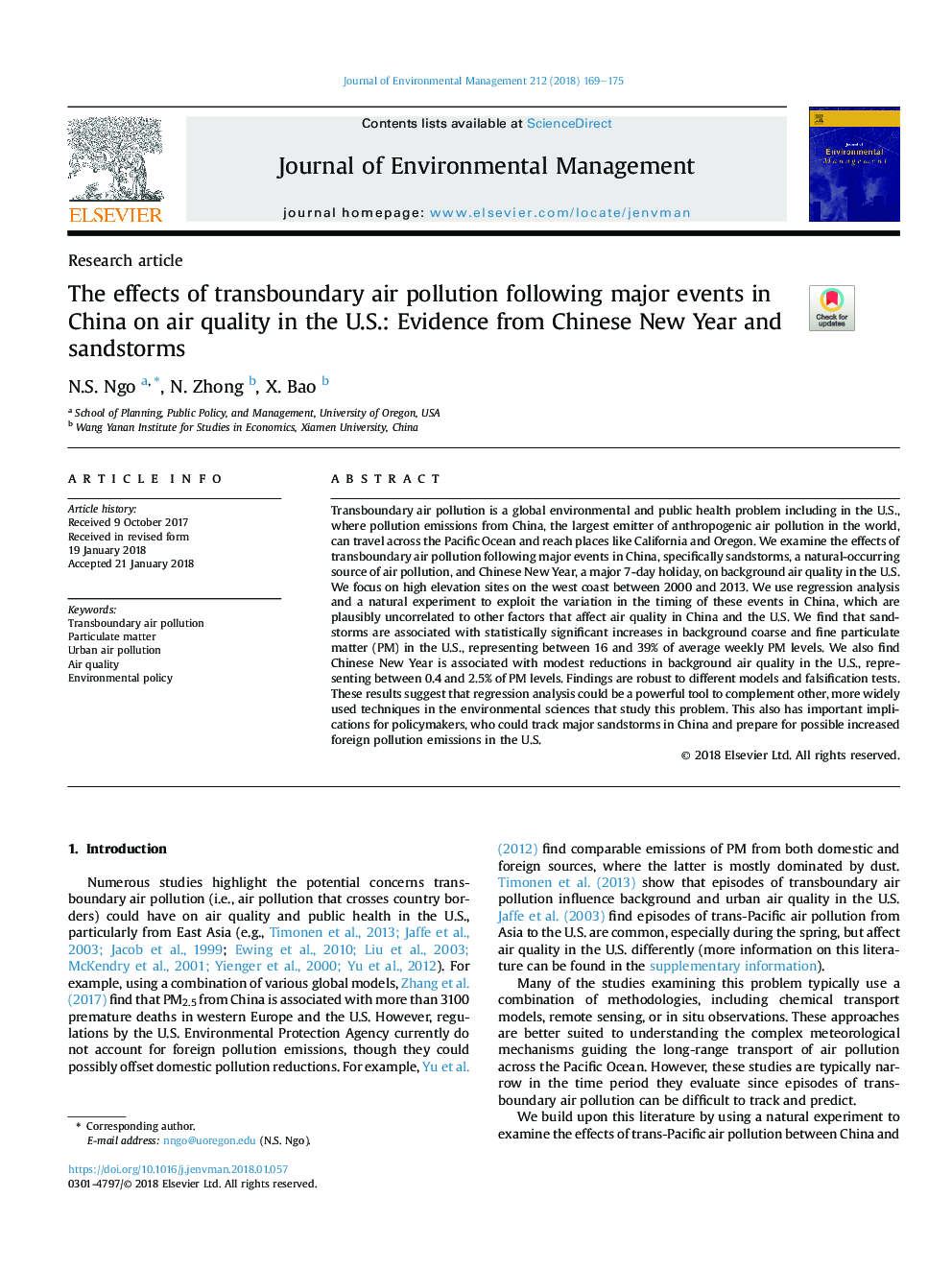| Article ID | Journal | Published Year | Pages | File Type |
|---|---|---|---|---|
| 7477974 | Journal of Environmental Management | 2018 | 7 Pages |
Abstract
Transboundary air pollution is a global environmental and public health problem including in the U.S., where pollution emissions from China, the largest emitter of anthropogenic air pollution in the world, can travel across the Pacific Ocean and reach places like California and Oregon. We examine the effects of transboundary air pollution following major events in China, specifically sandstorms, a natural-occurring source of air pollution, and Chinese New Year, a major 7-day holiday, on background air quality in the U.S. We focus on high elevation sites on the west coast between 2000 and 2013. We use regression analysis and a natural experiment to exploit the variation in the timing of these events in China, which are plausibly uncorrelated to other factors that affect air quality in China and the U.S. We find that sandstorms are associated with statistically significant increases in background coarse and fine particulate matter (PM) in the U.S., representing between 16 and 39% of average weekly PM levels. We also find Chinese New Year is associated with modest reductions in background air quality in the U.S., representing between 0.4 and 2.5% of PM levels. Findings are robust to different models and falsification tests. These results suggest that regression analysis could be a powerful tool to complement other, more widely used techniques in the environmental sciences that study this problem. This also has important implications for policymakers, who could track major sandstorms in China and prepare for possible increased foreign pollution emissions in the U.S.
Keywords
Related Topics
Physical Sciences and Engineering
Energy
Renewable Energy, Sustainability and the Environment
Authors
N.S. Ngo, N. Zhong, X. Bao,
